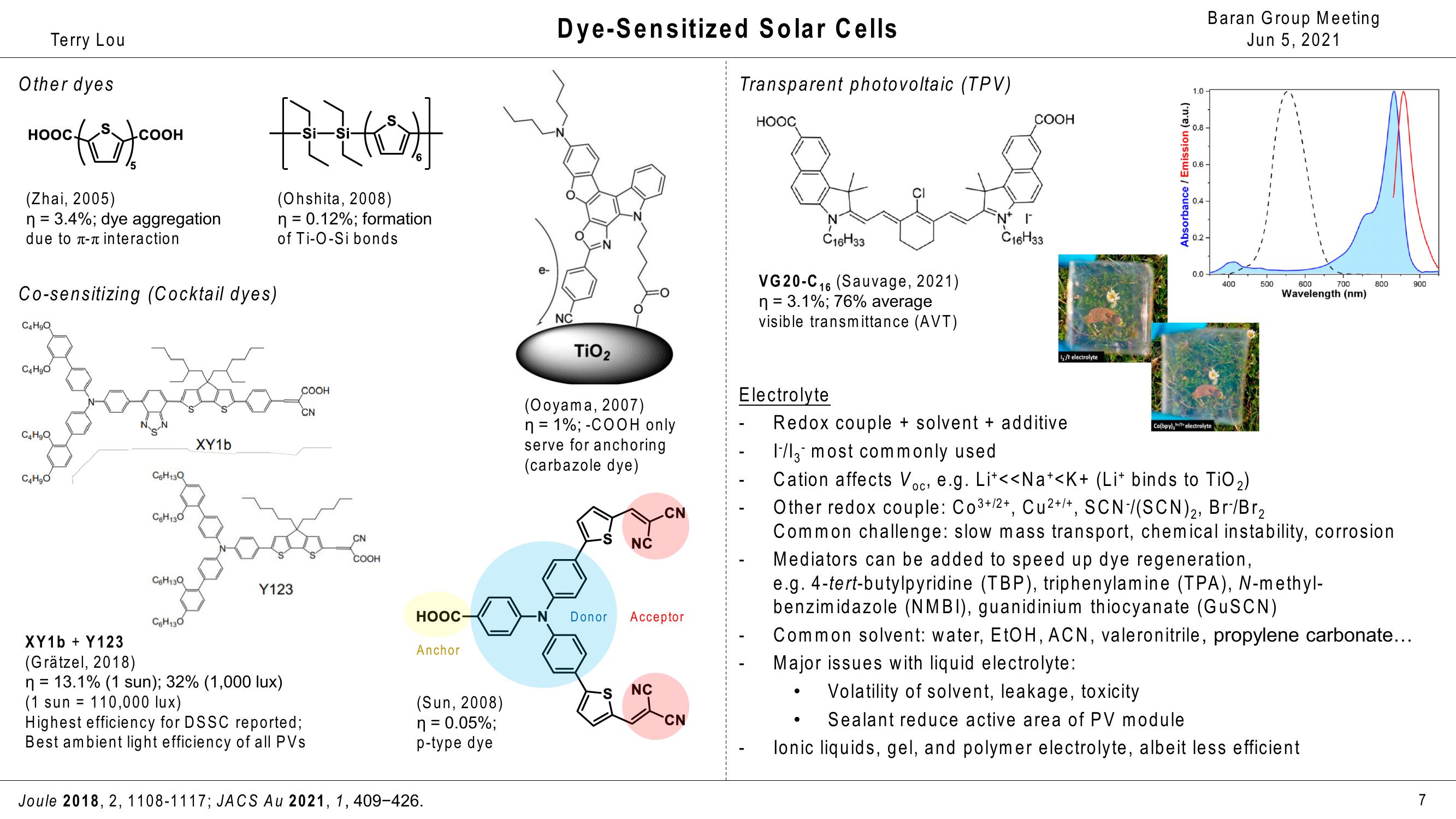Baran Group Meeting
Terry Lou
Other dyes
DOCK✗CDON
(Zhai, 2005)
5
n = 3.4%; dye aggregation
due to л-л interaction
Pekot
(Ohshita, 2008)
n = 0.12%; formation
of Ti-O-Si bonds
Dye-Sensitized Solar Cells
Transparent photovoltaic (TPV)
HOOC
N I
C16H33
Co-sensitizing (Cocktail dyes)
C4H9Q
C4H9O
C4H9O
XY1b
C6H13Q
C4H9O
XY1b+Y123
C6H130
C6H13Q
Y123
C6H130
COOH
CN
CN
COOH
COOH
Absorbance / Emission (a.u.)
1.0
0.8-
0.6.
0.4
Baran Group Meeting
Jun 5, 2021
NC
TiO2
(Ooyama, 2007)
n = 1%; -COOH only
serve for anchoring
(carbazole dye)
CN
S NC
Donor Acceptor
C16H33
VG20-C16 (Sauvage, 2021)
n = 3.1%; 76% average
visible transmittance (AVT)
Electrolyte
Redox couple + solvent + additive
1/13 most commonly used
/ electrolyte
0.2
0.0
400
500
600
700
800
900
Wavelength (nm)
Co(bpy), electrolyte
Cation affects V.
oc, e.g. Li*<<Na*<K+ (Li* binds to TiO 2)
Other redox couple: Co 3+/2+, Cu2+/+, SCN-/(SCN)2, Br/Br2
Common challenge: slow mass transport, chemical instability, corrosion
Mediators can be added to speed up dye regeneration,
e.g. 4-tert-butylpyridine (TBP), triphenylamine (TPA), N-methyl-
benzimidazole (NMBI), guanidinium thiocyanate (GuSCN)
Common solvent: water, EtOH, ACN, valeronitrile, propylene carbonate...
Major issues with liquid electrolyte:
HOOC
-N
Anchor
-S NC
•
(Sun, 2008)
Volatility of solvent, leakage, toxicity
CN
•
Sealant reduce active area of PV module
(Grätzel, 2018)
n = 13.1% (1 sun); 32% (1,000 lux)
(1 sun 110,000 lux)
Highest efficiency for DSSC reported;
Best ambient light efficiency of all PVs
Joule 2018, 2, 1108-1117; JACS Au 2021, 1, 409–426.
n = 0.05%;
p-type dye
lonic liquids, gel, and polymer electrolyte, albeit less efficient
7View entire presentation